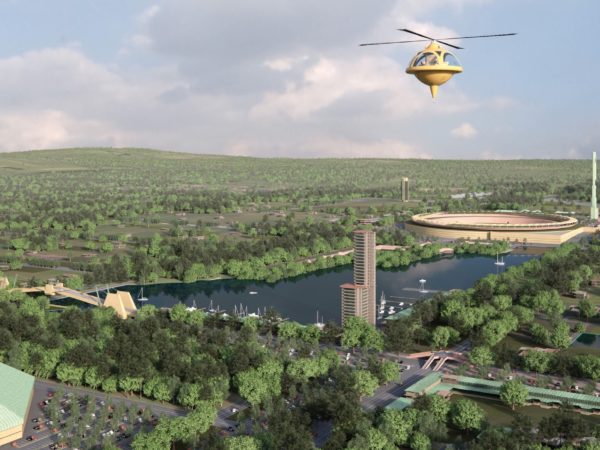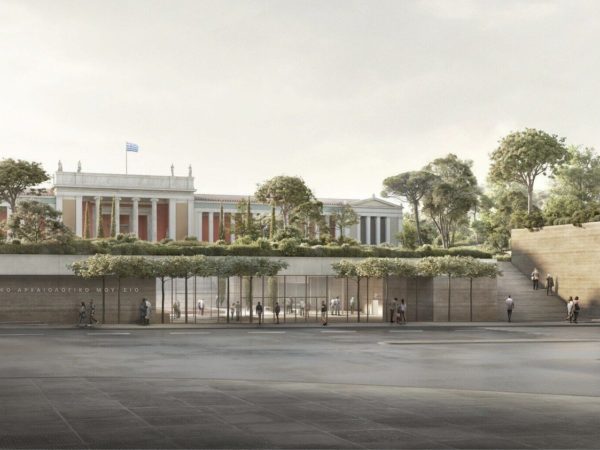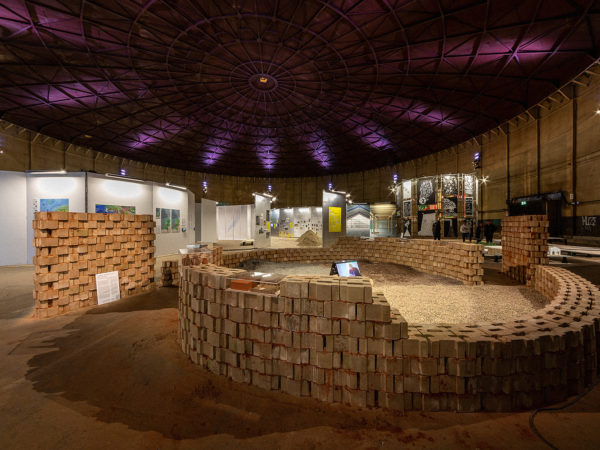Since the Neolithic, practice of creating space for human’s physical, socio-cultural, economic, and spiritual needs is what has given rise to contemporary forms of architecture. Mangunwijaya called it “architecturing”, whereas according to Indian literature the art of architecturing is called “Vastu-shastra”. Humans have always been a significant subject of an architect’s creation. Sustainable solutions to human needs are the simplest ways of creating space and shelter without harming nature and energy efficiency.

Founded by LI Hu and HUANG Wenjing in New York City, OPEN was established in Beijing in 2008 with the aim to transform people and the way they live, while striking a new balance between the human-made and nature. Led by a team of passionate designers, OPEN has collaborated widely across different disciplines to practice various fields of design, as well as the research and production of design strategies in the context of new challenges.

“The world is a complex system of elements, constantly interacting and in flux. Architecture is a vessel, a medium through which to interpret increasingly complex issues at work. It is a means to gather and connect, in meaningful ways. We have been patiently in search of architecture that is OPEN, which establishes intricate relationships between the forces in this confluence. Architecture that connects us with people— to meet, exchange, and share. Architecture that connects us with nature— trees and birds, sea and land, air and light. Architecture that connects us with ourselves.” – OPEN’s Manifesto
Sun Tower, Yantai, 2022

As the name suggests, Sun Tower is built as a unique cultural “lighthouse” integrating ancient knowledge of nature and contemporary urban life. OPEN, through its incredible design, wants people to acknowledge the wonders of nature that often get ignored. Rapid urbanisation has led the new town to be culturally deficient. To overcome this complexity, the space caters to the town with several much-needed public programs.

Whittled by sunlight, the building’s form emerges as an immense curvilinear structure being strategically designed in such a way that whilst standing beside the sea at a specific time, Sun Tower unravels its coruscating interiors to its viewers. The movements of the sun and the shadows are captured and marked by the building at four important cycles of the year. The ethereal space allows people to contemplate the meaning of time and our coexistence with the planet whilst experiencing the natural phenomena of light.
Chapel of Sound, Chengde, 2021

Inspired by the human ear, Chapel of Sound functions as an acoustic hall that renders sounds from nature, appearing timeless and alien— as if some strange and prehistoric boulder had bowled over to the bottom of the valley centuries ago. The hall optimises sound quality through a software simulation alongside sound-absorbing areas to avoid undesirable reverberations.

“When there is no performance, they also let in sounds from the surrounding valley. When the sun is shining, the hall plays with sunlight in addition to sound, as sunbeams travel and are diffused across its rough and cave-like surfaces. When it rains, water can enter the hall through the central opening on the structure’s top, falling through it onto the floor in a meditative spectacle, before being drained away by floor channels. And when there is no scheduled concert— no choir singing or instruments playing— visitors can still come and sit inside the hall to quietly listen to the sound of birds and crickets chirping, gentle breezes rustling through nearby leaves, or raindrops pattering down. Inside this mysterious space, nature orchestrates an ever-changing symphony” – OPEN
UCCA Dune Art Museum and Sea Art Museum, Quinhuangdao, 2018

Created underneath the sand dunes formed by the winds of the Bohai Bay, Dune Art Museum’s design motivates from the organically shaped spaces created by the act of Digging. The contours resemble a series of interconnected caves, once the home of our primaeval ancestors. Hidden between the sea and the sand, the essence of the Dune Art Museum reflects simple and timeless forms of space. OPEN desires to protect the vulnerable dune ecosystem, formed by natural forces over thousands of years.

The Dune Museum and the Sea Museum creates a silent dialogue by the sea. Emerging from the sea as a solitary rock that links to the shore for the pilgrimage of art at certain times with the right tide and at the right moment. The gallery exhibits one piece of art at a time. The art pilgrims, in solitary coexistence with the artwork, come infinitely close to their spirit. Behind the gallery, a hidden workshop is a retreat for the artist—a hermit on the sea.
OPEN has had its hard work been duly recognised with litigious awards like the 2021 Arcasia Awards Gold, 2020 Design for Asia Awards, 2019 LEAF Awards (EU), 2019 P/A Awards (USA) & 2019 AZ Awards (Canada) and many more. OPEN has also been nominated for 2020 London Design Museum’s Design of the Year (UK). While many architectural and design studios’ practice revolves around problem-solving, OPEN continues to transform the lives of the people and find a perfect balance to coexist with our planet in the utmost sustainable way through its innovative work and designs.
Text by Davangi Pathak
Image Courtesy: OPEN Architecture, Zaiye Studio, Jonathan Leijonhufvud and Zeng Tianpei
Find out more the studios and OPEN Architecture:
http://www.openarch.com/index.php/





